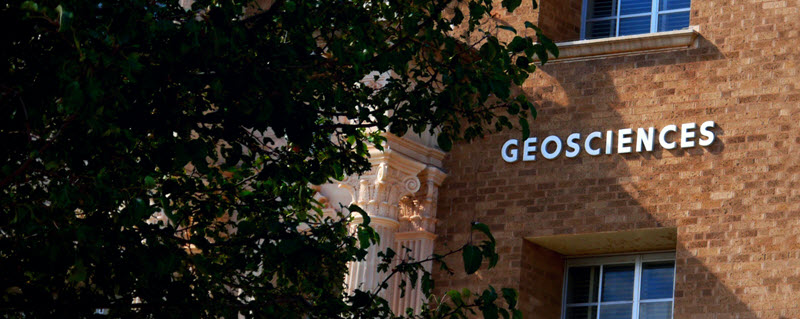Department History

The Department of Geology was established in 1926 under the chairmanship of Dr. Leroy T. Patton. In 1933, the departmental name was changed to the Department of Geology and Geological Engineering. In 1938, the Department of Geology and Petroleum Engineering was established, but in 1947 the name was reduced to Department of Geology. The change to Department of Geosciences was approved in 1963.
Dr. Patton served as the departmental chairman until 1949, at which time Dr. Raymond G. Sidwell assumed the duties. Dr. Sidwell resigned from the post in 1954 and Dr. F. Alton Wade, a former Professor of Geology at Miami University (Ohio), joined the department as its chairman. Dr. Wade served for ten years before requesting that he be relieved of administrative duties; the request was made because of his desire to conduct a more active research program on the geology of Antarctica. Dr. Richard B. Mattox succeeded Dr. Wade in the fall of 1964.
Dr. Mattox yielded the chairmanship to Dr. William D. Miller in 1971. After Dr. Miller's untimely death in 1972, Dr. Donald R. Haragan assumed the chairmanship. Drs. William Conroy, Otis Templer, and Claude Davidson withdrew from the department to form the Department of Geography. With the partial separation of the Atmospheric Science Group, Dr. Haragan relinquished the chairmanship in 1977. Dr. Davies was chair from 1977 through 1980, after which Dr. Haragan resumed the chairmanship. In 1983, Dr. Haragan became an Associate Dean of Arts & Sciences; Dr. Alonzo Jacka became chair. In 1991, as part of a College policy of reducing the number of small departments the Atmospheric Science Group was folded back into the Department with Dr. Richard E. Peterson as chair.
The department's academic programs have undergone some radical changes, not all of which were in response to advancements in technology. From the first program established by Dr. Patton to that which existed in 1953, one can detect a trend toward a unit dedicated to the training of personnel for the petroleum industry rather than an academic unit in which the fundamentals of the science were stressed. The college bulletins of the period indicate extreme specialization in the areas of petroleum geology and sedimentation. Under Dr. Wade's direction, a policy of providing fewer courses and stressing the basic principles of geology and geophysics was established. Dr. Wade reactivated the seismological observatory in 1955, and the geophysics program was launched in 1956 by addition to the staff of a qualified seismologist, Deskin Shurbet. The doctoral program was reactivated in 1963; it had been suspended in 1954 at Dr. Wade's request because of his belief that the program of that time did not justify granting of the doctoral degree. One person received the doctoral degree under the old program, and the first graduate of the new program received his degree in August 1968.
With the arrival of Dr. Donald Haragan in 1969, a new aspect of the department programs began: atmospheric science. (Some research on dust storms had been published in the 1950's by Sidwell and Warn.) Over the next three decades, new faculty were slowly added and collaboration with structural engineers led to the Wind Science and Engineering Research Center. (See the chronology on the Atmospheric Science Group web link, http://www.atmo.ttu.edu.)
One basic premise of departmental operation that has not changed since Dr. Patton assumed his duties is that all students within the department should receive extensive training in field methods of investigation. Dr. Patton was a dedicated field geologist and those who have followed him have had no reason to change this aspect of the academic programs. The department maintained a summer program for field instruction until 19XX; bases of operation that have been used include Capitan and Las Vegas in New Mexico, Junction and Alpine, Texas, and Salida, Colorado. Advanced field camps were conducted in the Moab, Utah area, but the availability of summer employment in the petroleum industry reduced the number of students taking graduate work during the summer sessions to a level below which such operations were feasible.
The department moved to its present quarters in 1953, shared with the Biology Department. The latter moved to new facilities in 1968. In 1976, the Atmospheric Science Group moved to the 12th floor of the Business Administration Building. By the end of the century, some of the Atmospheric Science program occupied space at Texas Tech University Reese National Security Complex (the former Reese Air Force Base). The Seismological Building was constructed in 1970's; it fell into disrepair in the 1990's, and the University razed the facility in 2000.
Distinguished Alumni
Department of Geosciences
-
Address
Department of Geosciences, 1200 Memorial Circle, Lubbock, TX 79409-1053 -
Phone
806.742.3102 -
Email
geosciences@ttu.edu
